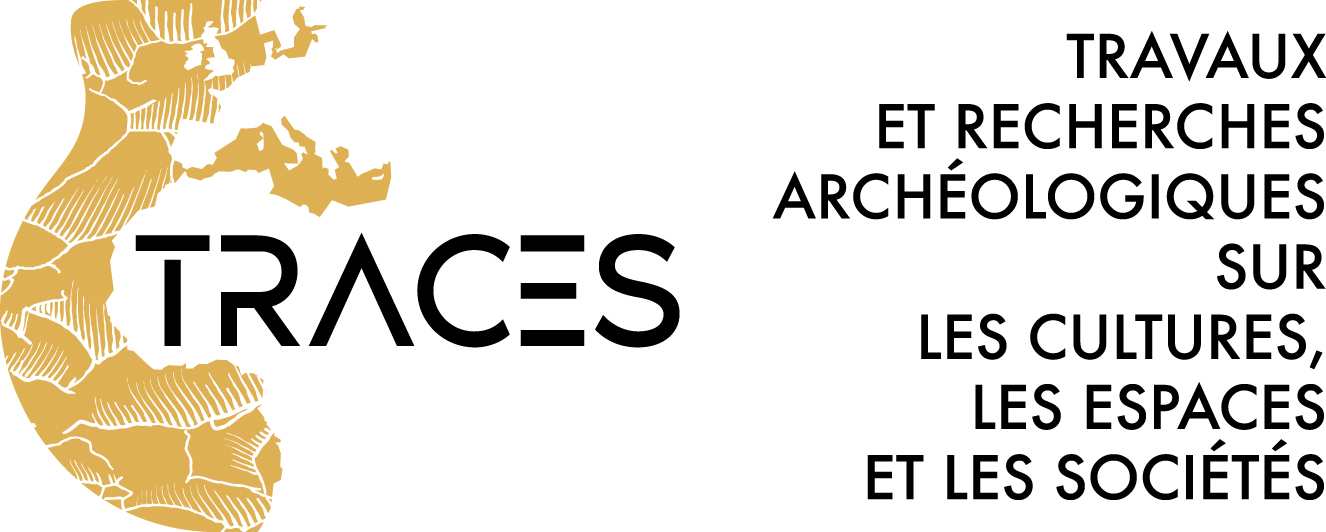-
Partager cette page
Programmes européens
Exploring Hominid Behavioral Patterns Through Time and Space: A Morpho-Techno-Functional Analysis of 3D Digital Models of Stone Hand Axes
Partenariats Hubert Curien-Maïmonide (PHC), pour le compte du ministère de l’Europe et des Affaires étrangères (MEAE) et du ministère de l'enseignement supérieur, de la recherche et de l'innovation (MESRI).
Durée : 24 mois
Responsables : M. Deschamps et M. Brenet.
Participants : M. Brenet, É. Claud, M. Deschamps, N. Goren-Inbar, G. Herlzlinger, C. López-Tascón, A. Varanda.
Ce projet consiste en la collaboration de chercheurs français et Israéliens. L'approche méthodologique novatrice de la numérisation 3D sera combinée avec des analyses statistiques, technologiques et fonctionnelles dans l'objectif d'analyser des populations de bifaces de l'Acheuléen et du Paléolithique moyen issus du Levant et d'Europe occidentale. Ces résultats ouvriront de nouvelles pistes de réflexions concernant les facteurs de variabilité dans les populations de bifaces tant d'un point de vue diachronique que synchronique. A cette large échelle, ils permettront également de réfléchir aux hypothèses de dispersions des populations et à leur chronologie à travers le continent entre le Proche-Orient et l'Europe occidentale ainsi qu'aux mécanismes de transmission culturelle à l'œuvre durant ces phases.
Bourse Marie Sklodowska-Curie Individual Fellowships ECOMORPH
Durée : 30 mois
Responsables : Sandrine COSTAMAGNO, directrice de recherche CNRS, TRACES UMR5608 et Ariane BIRKE, Université de Montréal.
Accueil à TRACES : Ana Belén GALÁN LÓPEZ, Université de Madrid
Les habitats et les modèles de mobilité d'un animal affectent hypothétiquement la densité et la morphométrie osseuse des membres. Les objectifs de ce projet sont deux ordres :
1) Tester cette hypothèse écomorphologique pour un taxon donné (Rangifer tarandus),
2) Établir un échantillon de référence pour ce taxon qui permettra de reconstituer son type d'habitat et son degré de mobilité en utilisant des échantillons d'os récupérés sur des sites archéologiques.
Ce projet quantifie le lien entre le type d'habitat, la mobilité et la densité osseuse ainsi que la morphologie en utilisant les rayons X et la tomographie par ordinateur (CT) et la morphométrie géométrique (GMM). L'étude se concentrera sur les rennes car c'est une espèce clé dans de nombreux contextes préhistoriques en Europe et en Amérique du Nord. Des échantillons de référence modernes seront prélevés en Amérique du Nord, où les troupeaux Rangifer tarandus (caribou, alias renne) existent encore dans les habitats boisés (non migratoires) et toundra (migrateurs), rendant possible la création d'un cadre référentiel.
Une fois la relation entre l'habitat, la mobilité et la structure osseuse quantifiée, les informations recueillies seront appliquées aux assemblages fauniques des sites archéologiques du Paléolithique supérieur dans le sud-ouest de la France et utilisées pour reconstituer la mobilité des proies. On pense que la mobilité des proies influence la mobilité saisonnière des prédateurs humains et leurs stratégies de chasse. Il existe également un débat de longue date sur le comportement migratoire des rennes en Europe occidentale au cours du Pléistocène supérieur et son influence sur les systèmes humains. Ce projet développera une méthodologie efficace à appliquer aux faunes archéologiques qui permettra de tester si des êtres humains chassaient des animaux qui migraient sur de longues ou de courtes distances, ce qui nous permettra de mieux connaître leurs stratégies de chasse, la mobilité des systèmes humains et potentiellement leurs choix technologiques.
B-IMPACT - Bronze-IMproved non-hazardous PAtina CoaTings
Duration : March 2015 – Febbruary 2017
Coordinator : Tadeja Kosec (Slovenian National Building and Civil Engineering Institute, Slovenia) / DICAM Project Responsible: Maria Chiara Bignozzi
Responsable de la partie française : Luc ROBBIOLA
Objectives of the B-IMPACT project :
- to develop protective coatings for outdoor bronzes with high performance in terms of durability, while respecting the ethics of the cultural heritage,
- to investigate the toxicity of the more efficient coatings with the aim of selecting non-hazardous ones, and
- to produce a marketable pre-formulation of the most efficient coatings
Brochure de présentation du programme B-Impact
Site Internet du programme B-Impact
Programmes européens clos
Responsable : Esther LOPEZ-MONTALVO.
Intitulé du programme : « NEOSOCWESTMED » : "Towards a comprehensive characterisation of the Neolithic societies through their graphic expressions: cultural identities and contacts in the Western Mediterranean"
Marie Curie Actions-IntraEuropean Fellowship (FP7 ERC). (nº 628428)
Lien vers le site de la Commission européenne : http://cordis.europa.eu/project/rcn/188252_en.html
Dates : 1er mars 2014 au 29 février 2016
Résumé : Ce programme de recherche vise à une caractérisation du processus de néolithisation et d’expansion des sociétés néolithiques dans le cadre de la Méditerranée occidentale- notamment la péninsule Ibérique, la France et l’Italie- à travers une analyse intégrée des manifestations graphiques pariétales et mobilières sur support céramique dans leur contexte culturel. Mon objectif est d’aborder la dynamique des sociétés néolithiques- identités, réseaux sociaux et d’interaction et évolution historique- à travers une approche novatrice, archéologique et anthropologique, des graphies néolithiques. Ce programme de recherche bénéfice d’un réseau de collaborations internationales et multidisciplinaires.
This project focus on one of the more exciting cultural, economic and social transformation process: the Neolitisation and expansion of Neolithic societies in the Western Mediterranean (VI.mill .cal BC-III.mill cal. BC).The main goal of this project is to provide a comprehensive characterization of this cultural process in the Iberian Peninsula as well as of the cultural relationships between this territory and the European Western Mediterranean regions through their graphic expressions (rock art and pottery decoration).For that purpose, an innovative theoretical and methodological approach will be implemented regarding both graphic and archaeological record. On the one hand, a comprehensive analysis and documentation of the three graphic horizons located in the Iberian Peninsula, an exceptional artistic territory in the European Neolithic, will be carried out, using the latest developments in data management and interpretation as well as recording. Our purpose is to characterize the social and territorial dynamics of Neolithic societies though their parietal depictions, introducing for the first time an archaeological and anthropological approach in the study of Neolithic rock art. On the other hand, a contrasting analysis between the data provided by the archaeological and graphic record will be performed in order to reach a comprehensive characterization of the Neolithic cultural mosaic as well as of its social and economic dynamics and territorial structure. Finally, a characterisation of the intercultural relationships between Western Mediterranean regions through their system of beliefs will be developed, studying the dispersion and persistence of figurative themes in both rock art and pottery. In sum, this project will contribute to definitively integrate the Neolithic rock art in the discussion of the Neolithisation process and will provide a comprehensive characterization of this cultural process through all the archaeological and graphic remains.
Intitulé du programme : « NEOSOCWESTMED » : "Towards a comprehensive characterisation of the Neolithic societies through their graphic expressions: cultural identities and contacts in the Western Mediterranean"
Marie Curie Actions-IntraEuropean Fellowship (FP7 ERC). (nº 628428)
Lien vers le site de la Commission européenne : http://cordis.europa.eu/project/rcn/188252_en.html
Dates : 1er mars 2014 au 29 février 2016
Résumé : Ce programme de recherche vise à une caractérisation du processus de néolithisation et d’expansion des sociétés néolithiques dans le cadre de la Méditerranée occidentale- notamment la péninsule Ibérique, la France et l’Italie- à travers une analyse intégrée des manifestations graphiques pariétales et mobilières sur support céramique dans leur contexte culturel. Mon objectif est d’aborder la dynamique des sociétés néolithiques- identités, réseaux sociaux et d’interaction et évolution historique- à travers une approche novatrice, archéologique et anthropologique, des graphies néolithiques. Ce programme de recherche bénéfice d’un réseau de collaborations internationales et multidisciplinaires.
This project focus on one of the more exciting cultural, economic and social transformation process: the Neolitisation and expansion of Neolithic societies in the Western Mediterranean (VI.mill .cal BC-III.mill cal. BC).The main goal of this project is to provide a comprehensive characterization of this cultural process in the Iberian Peninsula as well as of the cultural relationships between this territory and the European Western Mediterranean regions through their graphic expressions (rock art and pottery decoration).For that purpose, an innovative theoretical and methodological approach will be implemented regarding both graphic and archaeological record. On the one hand, a comprehensive analysis and documentation of the three graphic horizons located in the Iberian Peninsula, an exceptional artistic territory in the European Neolithic, will be carried out, using the latest developments in data management and interpretation as well as recording. Our purpose is to characterize the social and territorial dynamics of Neolithic societies though their parietal depictions, introducing for the first time an archaeological and anthropological approach in the study of Neolithic rock art. On the other hand, a contrasting analysis between the data provided by the archaeological and graphic record will be performed in order to reach a comprehensive characterization of the Neolithic cultural mosaic as well as of its social and economic dynamics and territorial structure. Finally, a characterisation of the intercultural relationships between Western Mediterranean regions through their system of beliefs will be developed, studying the dispersion and persistence of figurative themes in both rock art and pottery. In sum, this project will contribute to definitively integrate the Neolithic rock art in the discussion of the Neolithisation process and will provide a comprehensive characterization of this cultural process through all the archaeological and graphic remains.






